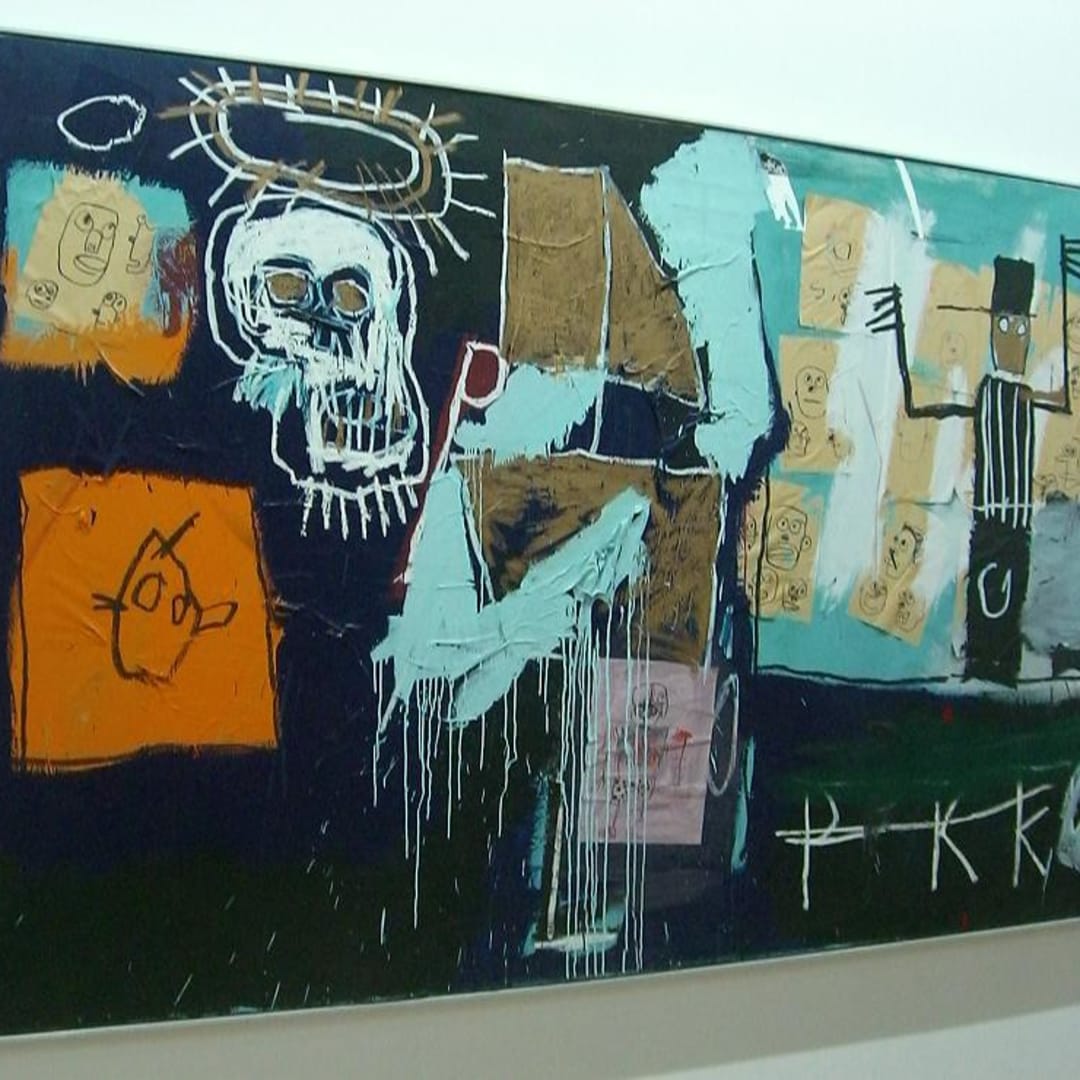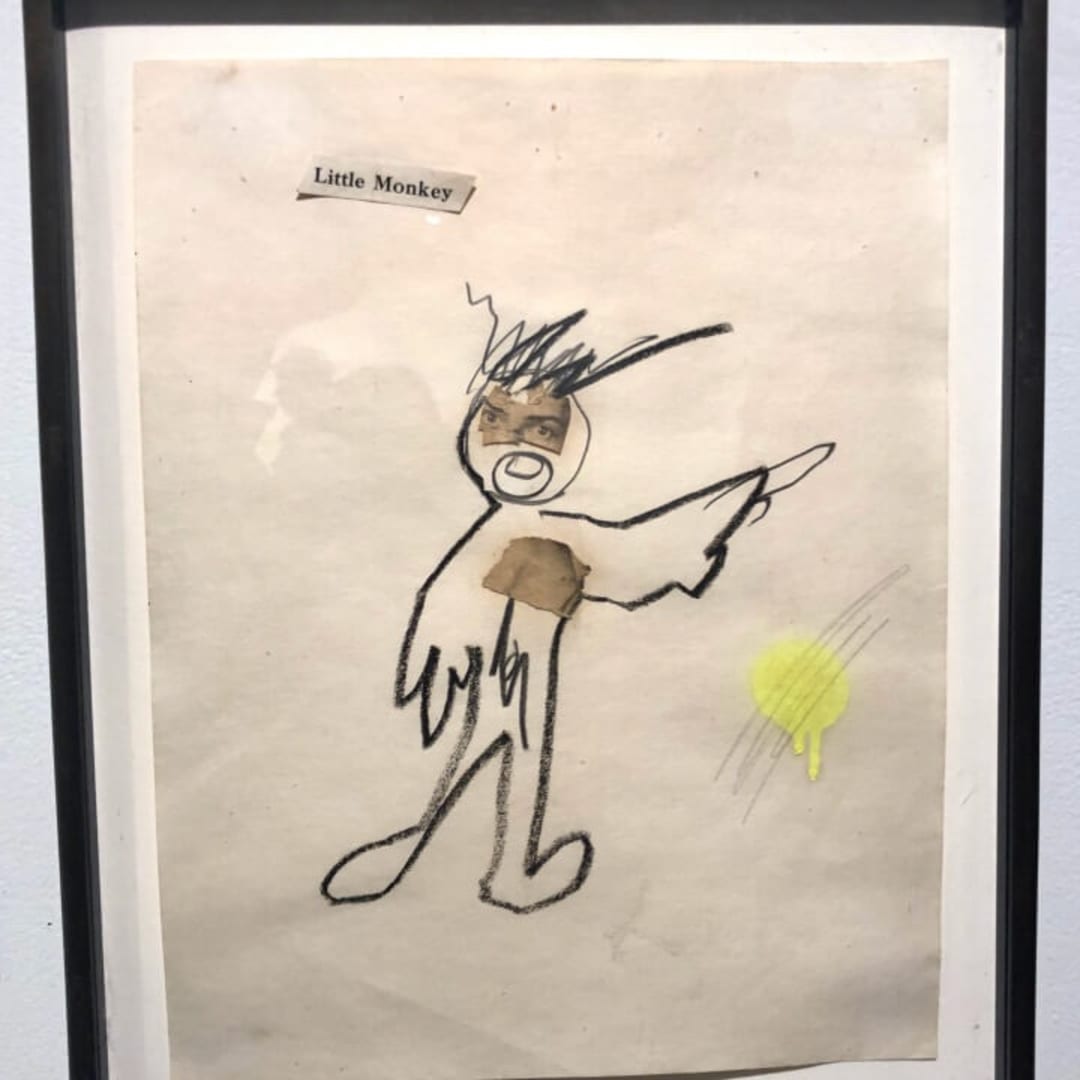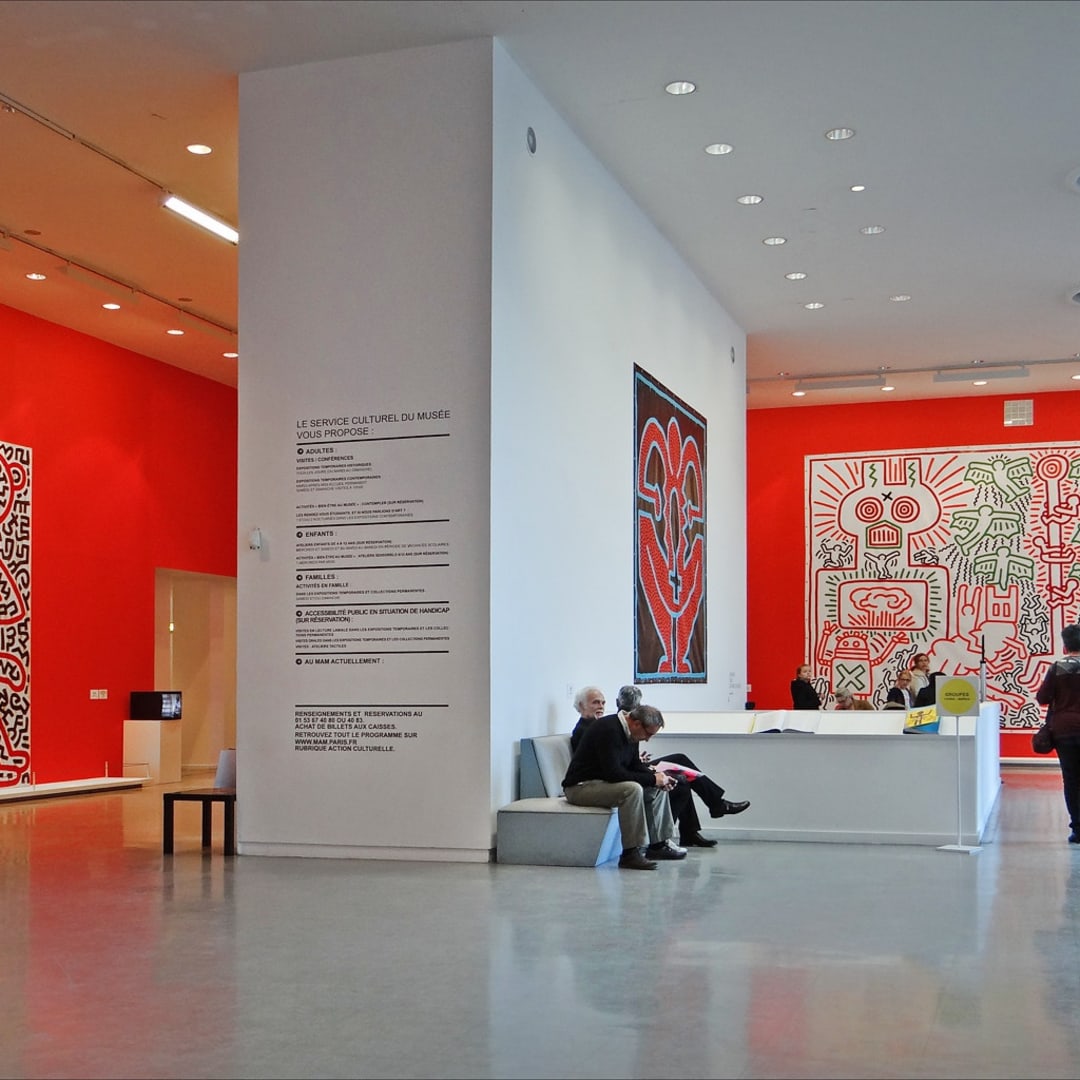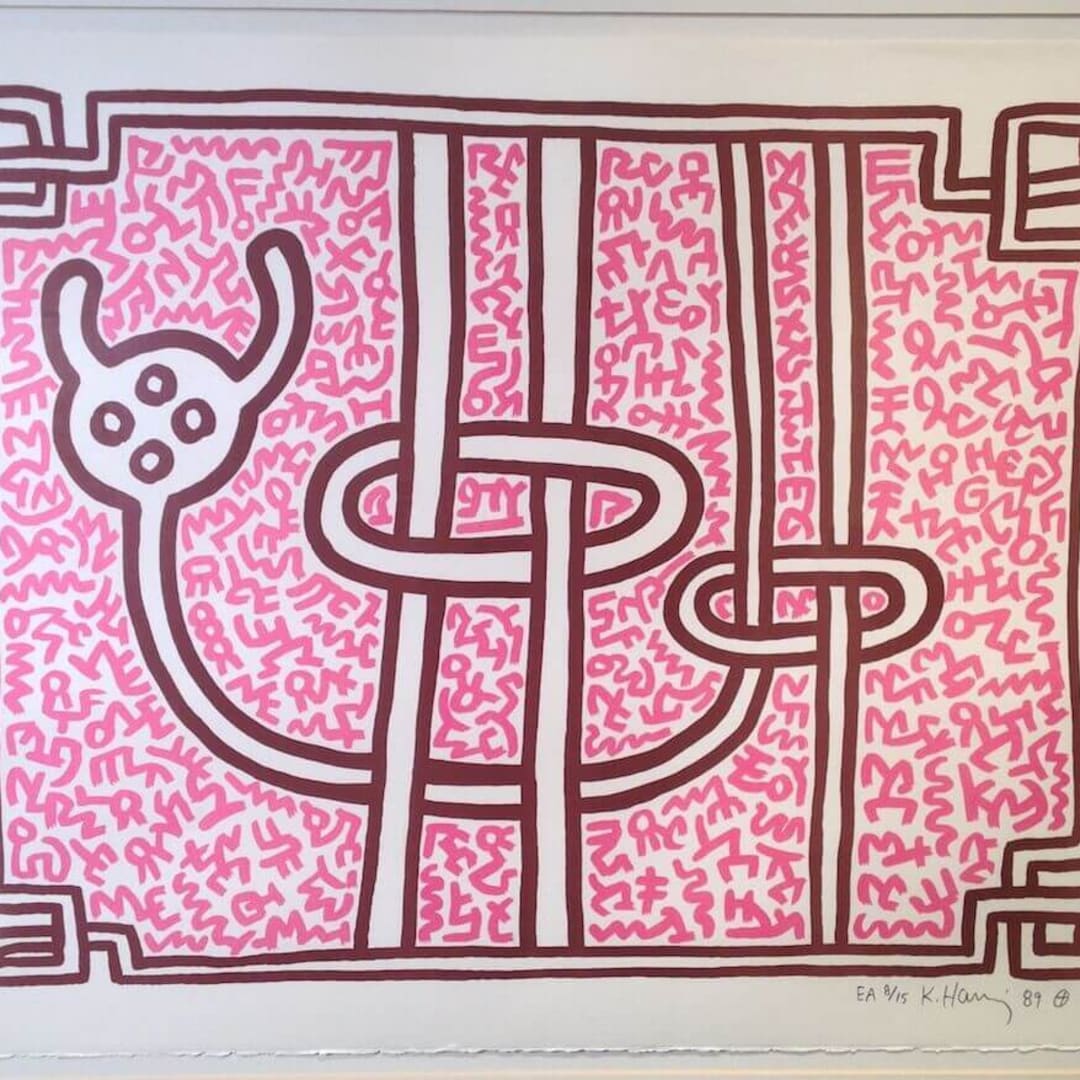The works of Jean-Michel Basquiat and Keith Haring gave credibility to graffiti artists and took their works from the street into fine art galleries and museums. The frenetic energy of the New York art scene in the 1980s was a perfect time for both Basquiat and Haring to work, play and get the attention they desired and deserved. Both Basquiat and Haring died young, each in a tragic way, yet, decades later, their art still has the ability to impact and inspire young artists and art lovers.
Jean-Michel Basquiat
Jean-Michel Basquiat dropped out of school, and left his father’s home in Brooklyn, when he was seventeen. He began doing graffiti on the streets of New York and couch surfing at the apartments of friends. Basquiat’s charm, talent and good looks made it easy for him to find welcoming friends (including Madonna) in the club and art scene that flourished in the ’80s.
In order to repay the hospitality and care that friends bestowed on him, Basquiat would often swap or leave a piece of his artwork for them. The works themselves are interesting, but even more so is the way that these creations were protected and cherished for so many years.
In 1979, Jane Diaz, was an art student and worked as a waitress in the East Village. She met Basquiat when he was spraying graffiti on the sidewalk. They struck up a conversation, he followed her home and stayed for about a week, leaving behind a bunch of drawings, including a self-portrait that was labeled Little Monkey, just one of the works that have been brought together for an exhibit called Our Friend Jean at the Bishop Gallery in Brooklyn, which is currently on display and will run through the end of the month.
Keith Haring
While Jean-Michel Basquiat was spray painting the walls and sidewalks of New York, Keith Haring was drawing in the subways. Both artists got recognition from the other underground artists and the group of people who frequented Club 57 and the other venues that were distanced from the mainstream art world of high-end galleries and museums.
Haring was sometimes arrested for drawing on blank subway advertising sites. The up-side of his subway graffiti was the number of New Yorkers who were able to watch him work and see the art that he so skillfully created.
Deceptively simple in style, Haring’s work was cutting cultural commentary on issues including AIDS, drug addiction, sex, and apartheid. His work, like Basquiat’s, crossed the line from low art to high art and both artists had their works shown in major galleries and museums. Basquiat died of a heroin overdose at age 27, just two years before Haring died of AIDS at age 30.
They enjoyed a close friendship. When Basquiat died, Haring created a painting called Piles of Crowns as a memorial, using the symbolic crown that often appeared in Basquiat’s work. For his friend’s obituary, Haring wrote, “The supreme poet. Every action is symbolic, every gesture an event… Greedily we wonder what masterpieces we might have been cheated out of by his death… only now will people begin to understand the magnitude of his contribution.”
The works of Jean-Michel Basquiat and Keith Haring are being shown at an exhibit at the National Gallery of Victoria in Melbourne, Australia. Called Keith Haring/Jean-Michel Basquiat: Crossing Lines, the exhibit will run through April 11, 2020.
The Works of Jean-Michel Basquiat and Keith Haring at VFA
Please contact us if you would like more information about Jean-Michel Basquiat’s Flexible, Keith Haring’s Chocolate Buddha #3 or any of the other fine art works available at VFA.
Lindy Percival. Keith Haring and Jean-Michel Basquiat: art stars who shone too briefly. The Sydney Morning Herald. November 22, 2019.
Robert Becker. Remembering Basquiat Through the Keepsakes He Gave Intimates. Hyperallergic. February 20, 2020.
Meg Watson. ‘We were all a little bit punk’: Haring, Basquiat and the art that defined 80s New York. The Guardian. February 23, 2020.








